5 Best Handheld Planers on Amazon Review 2024
- July 21, 2023
- 0 comment
Whether you’re refining the edges of a door or smoothing the sides of a bookshelf, hand planers stand as indispensable tools for any woodworking endeavor. These tools are essential for shaping minor imperfections, refining rough sections, and even reducing the height or width of your woodworking project by delicately removing thin layers of wood to unveil a polished surface beneath.
Planing is akin to sanding in its goal of achieving a smooth finish, yet sanding results in fine grains and a gentle texture, whereas planing yields sharp edges and a sleek texture. Planers greatly simplify complex projects, enhancing efficiency, and can elevate a finished project from amateurish to professional-looking—although some manual sanding of edges might still be necessary.
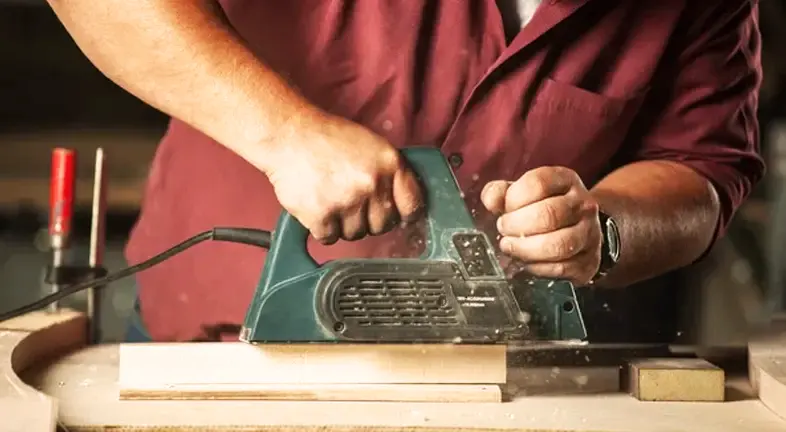
Available in various sizes, planers come in tabletop versions as well as stationary machinery designed for workshop installations. Among these, hand planers are favored for their agility and adaptability. Usable with a single hand, they facilitate precise adjustments for intricate tasks. Nevertheless, most electric planers excel in effortlessly shaving off extensive lengths of wood.
We’ve compiled a selection of top-notch hand planers to complete your toolkit, ensuring your workshop is fully equipped. Here are our recommendations.
5 Best Handheld Planer List:
- DEWALT DCP580B Brushless Planer (Cordless)
- Bosch PL16
- Makita KP0810 Planer
- Porter-Cable PC60THP Hand Planer
- WEN 6530 Electric Hand Planer
1. DEWALT DCP580B 20V MAX Brushless Planer (Cordless)
Specifications
- Power Source: Battery Powered
- Voltage: 20 Volts
- Maximum Cutting Depth: 5/64 inch
- No Load Speed: 15,000 RPM
- Width: 3-1/4 inches
- Weight: 6.8 pounds (without battery)
The DEWALT DCP580B is a high-end tool designed for professionals who demand both power and portability. Running on a 20V MAX battery, this cordless planer offers the freedom to work without the need for a power outlet. Its brushless motor ensures longer runtime, better performance, and extended durability. The precision-machined front and back aluminum shoes ensure a parallel cut, while the kickstand helps avoid the marring of the material when the planer is put down. This tool also features a poly-v drive belt for increased durability.
Things I liked about this product:
- Cordless convenience: Its battery-operated design offers unbounded mobility, which makes it excellent for work sites where electrical outlets are not readily available.
- Durable: The poly-v drive belt and brushless motor promise a longer lifespan for the planer.
- Extra features: The presence of a kickstand protects your work surface from potential damage, and precision-machined front and back aluminum shoes ensure an even cut.
2. Bosch PL1632 6.5 Amp Handheld Planer
Specifications
- Power Source: Corded Electric
- Amperage: 6.5 Amps
- Maximum Cutting Depth: 3/32 inch
- No Load Speed: 16,500 RPM
- Width: 3-1/4 inches
- Weight: 6.3 pounds
The Bosch PL1632 delivers power and performance with a 6.5 Amp motor that produces 16,500 RPM. Its dual-mount guide fence, with a plastic overshoe, offers stability and control while planing, and the optimized chip ejection system allows for a cleaner workspace. It also features a separate inch and metric depth scale for easy setting and better accuracy. Additionally, the lock-off release button helps prevent accidental starts for safer operation.
Things I liked about this product:
- Efficient chip ejection: The system efficiently removes chips and shavings, making for a cleaner workspace.
- Safety feature: The lock-off release button helps prevent accidental starts, enhancing the tool’s safety.
- Dual-mount guide fence: The guide fence with a plastic overshoe provides stability, ensuring controlled and precise planning.
3. Makita KP0810 7.5 Amp 3-1/4-Inch Planer
Specifications
- Power Source: Corded Electric
- Amperage: 7.5 Amps
- Maximum Cutting Depth: 5/32 inch
- No Load Speed: 16,000 RPM
- Width: 3-1/4 inches
- Weight: 7.4 pounds
Makita’s KP0810 is an industrial-grade planer boasting a potent 7.5 Amp motor. It can plane up to 3-1/4 inches wide and 5/32 inches deep in a single pass, facilitating rapid stock removal. The two-blade cutter head with double edge carbide blades adds to its effectiveness. It features a rigid die-cast aluminum housing and all ball-bearing construction for longer tool life. The ergonomically centered balance with a rubberized front handle and rear handle significantly improves user comfort and control.
Things I liked about this product:
- Powerful motor: The robust 7.5 Amp motor provides ample power to handle demanding tasks with ease.
- Sturdy build: The rigid die-cast aluminum housing and all ball-bearing construction guarantee the tool’s longevity.
- Comfort and control: The ergonomically balanced design with rubberized handles offers comfort during long working hours and enhances control over the tool.
4. Porter-Cable PC60THP 6-Amp Hand Planer
Specifications
- Power Source: Corded Electric
- Amperage: 6 Amps
- Maximum Cutting Depth: 5/64 inch
- No Load Speed: 16,500 RPM
- Width: 3-1/4 inches
- Weight: 8.5 pounds
The Porter-Cable PC60THP is a cost-effective option that doesn’t compromise on quality. Its 6-Amp motor provides ample power for smoothing and leveling wood surfaces. It offers a maximum cut depth of 5/64 inches, and its overmold depth knob offers ten positive steps for multiple depth control. Its dual-side dust extraction allows for extraction on either side of the tool for a cleaner work environment. The planer also includes a kickstand that helps protect the work surface and the blades.
Things I liked about this product:
- Value for money: This planer provides an excellent combination of performance and affordability.
- Dust extraction: The dual-side dust extraction allows for a cleaner work environment, reducing post-task cleanup.
- Multiple depth control: The overmold depth knob provides ten positive steps for versatile depth control, suiting various woodworking needs.
5. WEN 6530 6-Amp Electric Hand Planer
Specifications
- Power Source: Corded Electric
- Amperage: 6 Amps
- Maximum Cutting Depth: 1/8 inch
- No Load Speed: 34,000 cuts per minute
- Width: 3-1/4 inches
- Weight: 6 pounds
If you’re looking for an affordable yet efficient planer, the WEN 6530 is your best bet. This 6-Amp electric hand planer can make quick work of your material, offering up to 34,000 cuts per minute. The planer’s cutting width is 3-1/4 inches, with a maximum cutting depth of 1/8 inch. For versatile usage, the depth can be adjusted in 16 positive stops, ranging from 0 to 1/8 inches. It includes a rabbeting guide, a dust bag, a kickstand, and a parallel fence bracket, making it an excellent value for money.
Things I liked about this product:
- Budget-friendly: Despite its lower price point, the WEN 6530 delivers impressive performance.
- Versatility: With 16 positive depth stops, this tool can handle a variety of materials and thicknesses.
- All-inclusive package: The planer comes with numerous useful accessories like a rabbeting guide, a dust bag, a kickstand, and a parallel fence bracket, adding value to your purchase.
Comparison Table
| Feature | DEWALT DCP580B | Bosch PL1632 | Makita KP0810 | Porter-Cable PC60THP | WEN 6530 |
|---|---|---|---|---|---|
| Power Source | Battery Powered | Corded Electric | Corded Electric | Corded Electric | Corded Electric |
| Amperage/Voltage | 20 Volts | 6.5 Amps | 7.5 Amps | 6 Amps | 6 Amps |
| Max Cutting Depth | 5/64 inch | 3/32 inch | 5/32 inch | 5/64 inch | 1/8 inch |
| No Load Speed | 15,000 RPM | 16,500 RPM | 16,000 RPM | 16,500 RPM | 34,000 cuts per minute |
| Cutting Width | 3-1/4 inches | 3-1/4 inches | 3-1/4 inches | 3-1/4 inches | 3-1/4 inches |
| Weight | 6.8 lbs (w/o battery) | 6.3 lbs | 7.4 lbs | 8.5 lbs | 6 lbs |
All in all conclusion
The DEWALT DCP580B‘s strong suit is its convenience and performance. With the advantage of being cordless, it offers mobility and flexibility. Its brushless motor ensures a longer runtime, thereby providing efficient performance. This planer is highly recommended for professionals who seek an all-rounder planer with the added benefit of portability.
The Bosch PL1632 is a powerful planer that stands out with its user-friendly features and solid construction. Its efficient chip ejection system keeps the workspace clean, and the dual-mount guide fence ensures precision. The safety features like the lock-off release button give it an edge, making it a reliable tool for both professionals and hobbyists.
When it comes to raw power, the Makita KP0810 shines bright. With a robust 7.5 Amp motor, it is capable of tackling demanding tasks with ease. Its sturdy build and balanced design enhance user comfort, making it suitable for intensive and prolonged use. If you are someone who requires power and durability in a tool, this is the one for you.
The Porter-Cable PC60THP offers a combination of performance and value. Despite being cost-effective, it doesn’t compromise on power and quality, making it an excellent choice for budget-conscious users. The dual side dust extraction feature and the ability for multiple depth control enhance its utility. This planer is ideal for users seeking a blend of affordability and efficiency.
Lastly, the WEN 6530 is a budget-friendly option that doesn’t skimp on functionality. It offers an impressive cutting speed and comes with a variety of useful accessories. The 16 positive depth stops provide versatility in work, and the lightweight design makes it easy to handle. If you are just starting out in woodworking or require a tool for light-duty tasks, this planer is a perfect choice.
To conclude, each of these handheld planers brings its own unique set of strengths to the table. Based on your specific needs, whether it be power, precision, value for money, or versatility, you can choose the planer that aligns best with your requirements. Whichever you choose, rest assured that all of these options are top-rated and trusted by many users.
Factors to Take into Account
Prior to finalizing your choice regarding which hand planer to invest in, there are several crucial aspects that warrant thorough consideration. These encompass power output, planer dimensions, and the decision between a battery-powered or corded variant. Below, we highlight some key focal points to bear in mind when selecting a new hand planer.
Power Potency
When undertaking a comparison of diverse electric hand planers, perhaps the most pivotal factor to assess is the motor’s power. The power output of electric hand planers is quantified in either amperage or voltage, contingent on the power source. Typically, most models fall within the range of four to seven amperes, a range that should suffice for woodworking projects. Elevated power becomes most pertinent when dealing with hard woods, subjecting the device to heightened strain. However, if your intended usage leans toward softer woods and relatively smaller, more manageable projects, the amperage rating of the planer holds less paramount significance.
Another numerical value to focus on is RPM, signifying rotations per minute. In the realm of planers, this denotes the speed of the cutter. By comprehending the device’s maximum RPM capacity, you can discern the velocity at which the planer blades operate. The RPM, coupled with direct power, serves as a robust indicator of the device’s efficacy in swiftly and effectively paring down or shaping a piece of wood.
Cut Dimensions and Depth
A pivotal aspect demanding close attention is the cut dimensions and depth of your chosen planer. The dimensions encompass the width and cutting capacity, generally standardized at 3.25 inches for handheld models. This breadth comfortably accommodates thick doors, tabletops, and even framing lumber. Although some models offer larger dimensions, such extensive capacity only becomes essential when handling exceedingly large or wide wood pieces.
The cut depth pertains to the thickness of wood that each planer pass shaves away. Virtually all electric hand planers feature adjustable depth settings to tailor cuts to your requirements. While the maximum cut depth is seldom requisite, possessing this knowledge proves valuable in scenarios requiring substantial material removal from a project surface.
Battery-Powered vs. Corded
Much like various other handheld power tools, the option exists to choose between a battery-operated planer, ensuring portability without concerns of proximity to a power source, and a corded variant. Numerous corded hand planers deliver enhanced power to the device, with some experts asserting their superior consistency overall. Hence, if your planer is unlikely to venture beyond your workshop or locations with ready access to power outlets, a corded model merits serious consideration.
Types of Hand Planers
Bench Planers
Bench planers, frequently used on workbenches, exhibit a two-handed design featuring a front knob for dual-handed control over shaving depth. In these versions, the shaving blade is positioned at a 45-degree angle with a downward-pointing bevel, enabling effective imperfection removal from the workpiece. Blade depth adjustment is typically available in bench planers, and they are equipped with a chip deflector on the cutting blade to maintain workshop cleanliness. With over 20 styles available, bench planers cater to diverse tasks.
Block Planers
For aficionados of traditional woodworking tools, block planers hold great appeal. Easily held with one hand, these tools are ideal for squaring up small stocks, planing lines, erasing mill marks, beveling edges, or sharpening pencils. In contrast to bench planers, block planers have blades positioned at a 20-degree angle with an upward-facing bevel.
Joinery Planers
When precision grooves and cuts are essential to fit various woodworking pieces together, joinery planers are indispensable. These tools boast blades and guides of varying sizes to ensure consistent grooves, cuts, and notches on workpiece ends. Joinery planers come in a wide array of options, suitable for cutting notches and grooves of different depths and widths against the wood grain or along the sides.
Molding Planers
Molding planers specialize in crafting diverse contours and shapes in wood trims. With a history dating back to ornate moldings in early European cathedrals and decorative interiors, these planers are versatile tools. Crafting customized trims often requires multiple molding planers. Large curved planers shape broad contours along a workpiece’s length, while smaller planers cut rounded beads and notches, adding an elegant touch to the piece.
Choosing Between Metal and Wooden Hand Planers
Metal Planers
Metal planers possess greater weight compared to their wooden counterparts, but this weight can be advantageous as less force is required to shave the workpiece. Blade depth adjustment is also more straightforward in metal planers. Crafted from powder-coated metals with wooden or metal handles, they offer enhanced durability.
Wooden Planers
Lighter and more maneuverable than metal counterparts, wooden planers excel in planing upright workpieces, preventing hand fatigue induced by heavier metal options. For those dedicated to traditional woodworking, the smooth texture of a wooden planer is particularly appealing. Adjusting blade depth in wooden planers can be more challenging and time-consuming, requiring the use of a mallet. Nonetheless, the additional effort is worthwhile for artisans whose woodworking toolkit remains incomplete without a wooden planer.
Frequently Asked Questions
- What is a handheld planer used for?
A handheld planer is used for smoothing and trimming wooden surfaces. It’s a versatile tool often used in carpentry and woodworking for tasks like leveling wood, fixing sticking doors, and creating grooves. - What is the difference between a corded and cordless planer?
A corded planer relies on mains electricity for power, typically offering more consistent power output. It is excellent for prolonged use but lacks mobility. On the other hand, a cordless planer is powered by a battery, offering greater mobility and convenience, especially for remote job sites. - What should I look for when buying a handheld planer?
When buying a handheld planer, consider the power source, motor power, cutting depth, no load speed, weight, ergonomics, dust collection capabilities, additional features, price, and brand reputation. Make sure the tool suits your specific needs and projects. - How do I maintain my handheld planer?
Regularly clean the tool, ensure the blades are sharp and replace them if necessary, lubricate moving parts, and check for worn-out components. Always follow the manufacturer’s maintenance guidelines. - Can I use a handheld planer on all types of wood?
Handheld planers can be used on various types of wood, but the tool’s effectiveness may depend on the wood’s hardness and the tool’s power. - Are all planer blades interchangeable?
Not necessarily. Although some models may use the same blade types, others may require specific blades. Always check the manufacturer’s recommendations for blade replacement. - How often should I replace the blades on my planer?
The frequency of blade replacement depends on how often you use your planer and the type of wood you work with. If you notice a decrease in performance or the finish is not as smooth as it should be, it may be time to replace your blades.
We’re excited to learn about your experiences! Feel free to share your insights and thoughts on the 5 Best Handheld Planers available on Amazon in 2024. Your valuable input can greatly assist other potential buyers in making well-informed choices. Drop your comments in the section below – we can’t wait to hear from you!

David Murray
Forestry AuthorI'm David Murry, a forestry equipment specialist with a focus on chainsaw operation. With over 13 years of experience, I've honed my skills in operating and maintaining a wide range of machinery, from chainsaws to log splitters. My passion for the outdoors and commitment to sustainable forestry drive my work, which emphasizes safety, efficiency, and staying updated with industry advancements. Additionally, I'm dedicated to sharing my expertise and promoting environmental awareness within the forestry community.

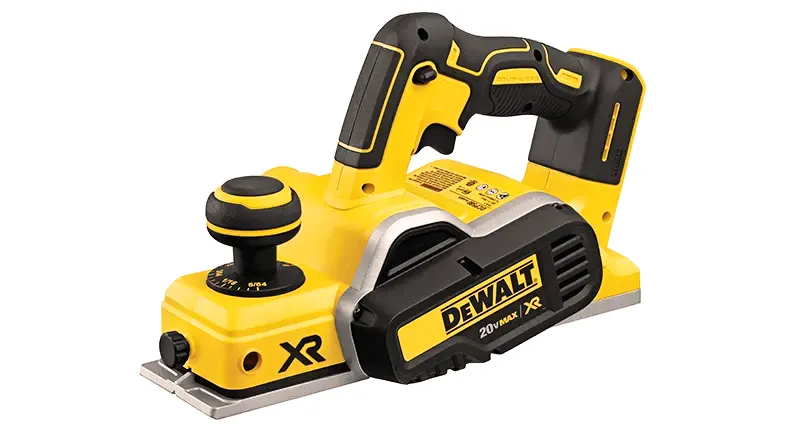


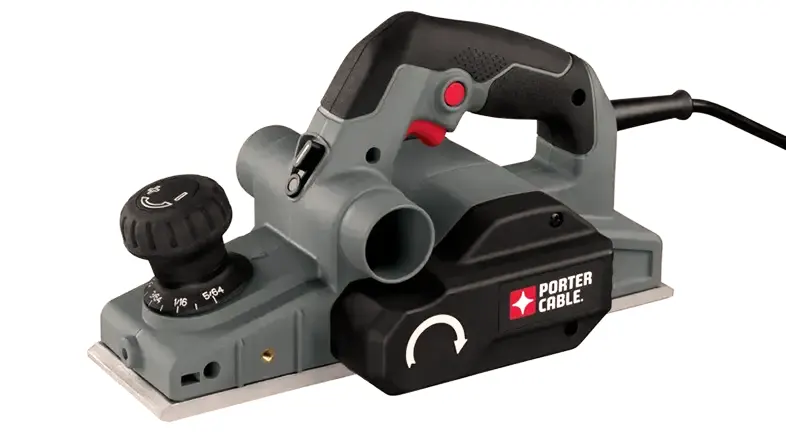







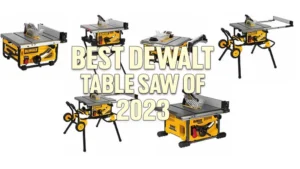




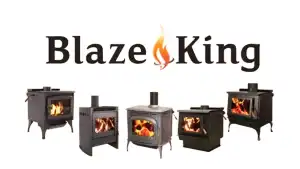
Leave your comment